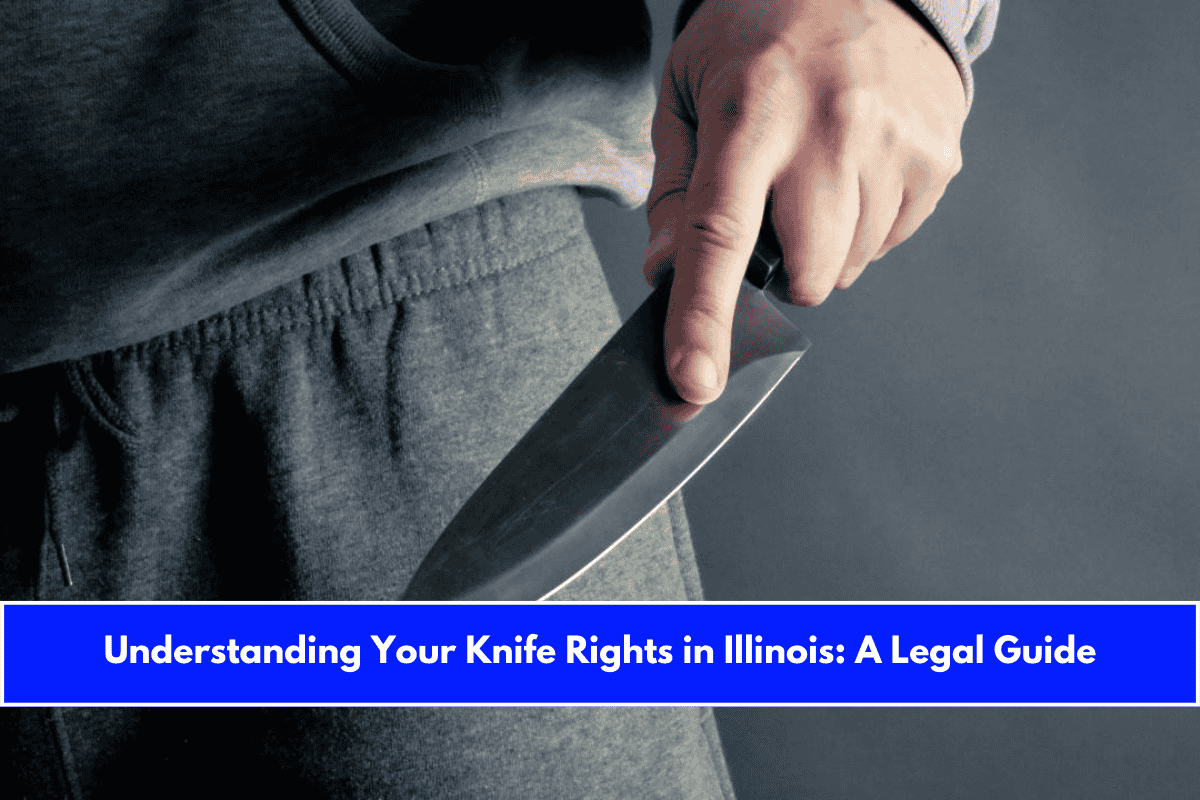Illinois knife laws are among the most complex in the Midwest, balancing the rights of individuals with public safety concerns. Whether you carry a pocketknife for work or collect specialty blades, it’s essential to understand what’s legal—and what could land you in trouble.
Types of Knives and Their Legal Status
- Switchblades & Automatic Knives: These are generally prohibited. However, adults age 21 and over with a valid Firearm Owner’s Identification (FOID) card may legally own and carry switchblades and automatic knives. Without a FOID card, possession is illegal and can result in a Class A misdemeanor.
- Ballistic Knives: Knives that can project a blade (ballistic knives) are strictly banned for everyone, regardless of permit status.
- Butterfly Knives & Specialty Blades: Butterfly knives are legal to own and carry, but restrictions apply in certain public and government spaces. Always check local ordinances for additional rules.
Blade Length Restrictions
- Statewide Rules: Illinois law does not set a universal maximum blade length for all situations. However, knives with blades 3 inches or longer are banned in government-owned properties, schools, and certain other restricted locations.
- Local Laws: Cities can set stricter limits. For example, Chicago prohibits knives with blades longer than 2.5 inches within city limits. Always check local ordinances before carrying a knife in a new area.
Open Carry vs. Concealed Carry
- Open Carry: Generally legal for most knives, unless the knife is used or intended to be used unlawfully or carried into restricted locations.
- Concealed Carry: Carrying a knife with a blade 3 inches or longer in a concealed manner can be a violation unless you have a valid reason (e.g., work requirement). Carrying with unlawful intent is always prohibited.
Location-Based Restrictions
Prohibited Areas
It is illegal to carry knives (of any blade length) in schools, courthouses, government buildings, or places serving alcohol.
Minors face additional restrictions, and their guardians may be fined if underage knife possession occurs.
Penalties for Violations
- Class A Misdemeanor: Carrying a restricted knife or violating location-based rules can result in up to 364 days in jail and a fine of up to $2,500.
- Felony Charges: More severe violations, such as carrying a knife with unlawful intent or repeat offenses, may result in felony charges and harsher penalties.
How to Stay Compliant
- Check Local Laws: Illinois does not have a statewide preemption law, so municipalities can—and do—set stricter rules than the state.
- Avoid Restricted Areas: Never carry knives in schools, government buildings, or other prohibited locations.
- Get a FOID Card: If you wish to carry a switchblade or automatic knife, ensure you are eligible and obtain a valid FOID card.
- Keep Blade Length in Mind: Stay under the 3-inch limit in most public places, and under 2.5 inches in Chicago.
Summary Table: Illinois Knife Law Basics
| Knife Type | Legal to Own? | Legal to Carry? | Special Restrictions |
|---|---|---|---|
| Pocketknife (<3″) | Yes | Yes | Avoid schools/gov. buildings |
| Switchblade/Auto | Yes (with FOID) | Yes (with FOID) | Banned without FOID; local bans |
| Ballistic Knife | No | No | Banned statewide |
| Butterfly Knife | Yes | Yes | Check local laws |
| Blade >3″ | Yes | Restricted | Banned in gov. areas/schools |
| Blade >2.5″ (Chicago) | Yes | No | Chicago citywide restriction |
Illinois knife laws require careful attention to both state and local regulations. Always check the rules for your area, be mindful of blade length, and avoid carrying knives in restricted locations. When in doubt, consult legal counsel or local law enforcement to ensure you’re within your rights.
Sources:
- https://www.couteaux-morta.com/en/illinois-knife-laws/
- https://nobliecustomknives.com/us-knife-laws/illinois-knife-laws/
- https://tkellknives.com/knife-laws-in-illinois-navigating-legal-carry-and-restrictions/
- https://edc.ninja/illinois-knife-laws/
- https://www.andrewnickel.com/blog/2021/october/illinois-knife-laws/











Leave a Reply